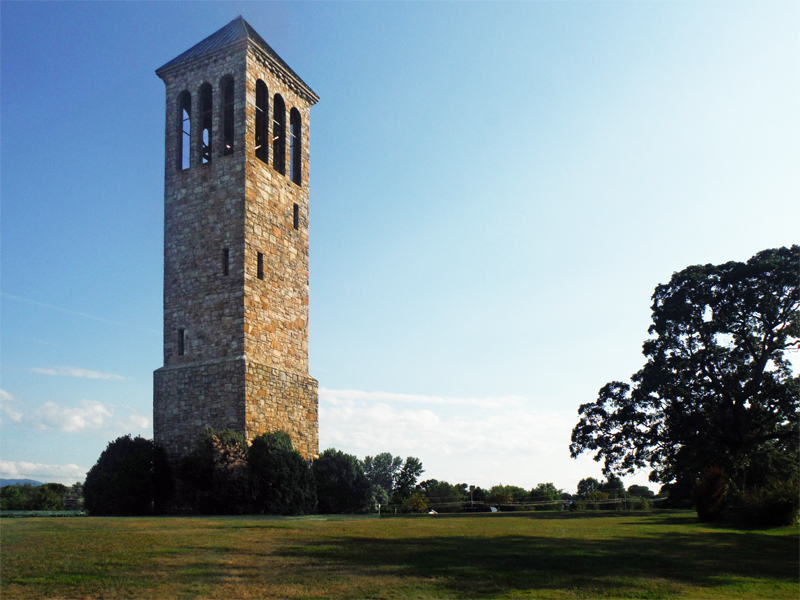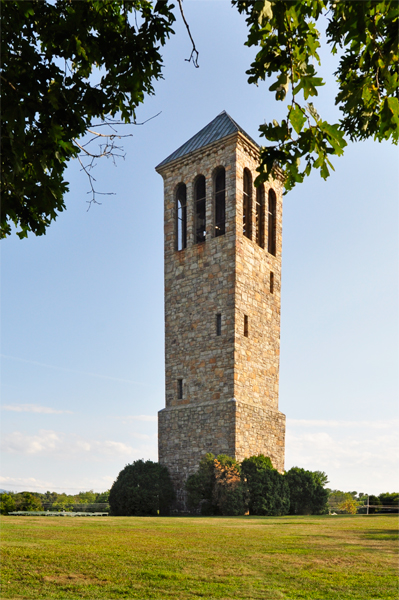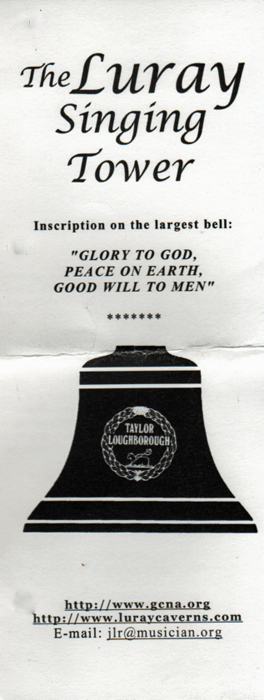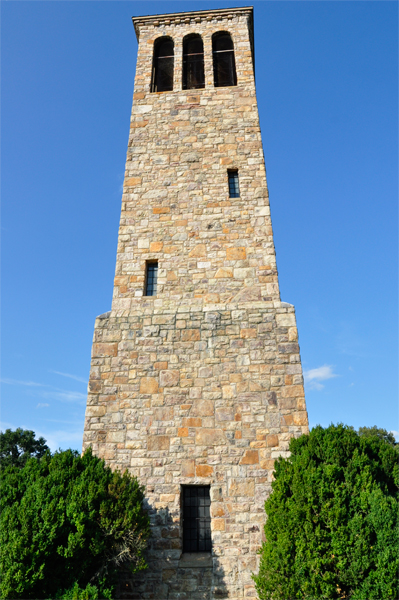The Luray Singing Tower, officially known
as the Belle Brown Northcott Memorial, contains a carillon of 47 cast
bells. With an endowment to provide for its maintenance and for recitals
in perpetuity, it was a gift to the town of Luray by the late Col. T.
C. Northcott and his daughter, Mrs. Katherine Northcott Graves, in memory
of Col. Northcott's wife, Belle Brown Northcott. It was dedicated in
1937.
By definition, a carillon is a musical instrument consisting of at
least 23 tuned bells arranged in chromatic series and played from a
keyboard permitting control of expression. Luray’s carillon was made
by the Taylor Bellfoundry of Loughborough, England, which traces its
history back to AD 1360. After being cast, the bells are tuned by precisely
grinding their interior surface on a large lathe. A carillon bell’s
sound integrates five pitches - the fundamental, the hum tone an octave
below, the minor third, the fifth, and the octave. This characteristic
minor third gives the carillon a unique voice of richness and beauty.
|
|
Quick facts about the Luray Carillon:
The Luray Carillon's largest bell weighs 7,640 pounds
and is six feet in diameter.
The smallest bell weighs 12.5 pounds.
The total weight of the bells is 36,170 pounds.
The bells are made of bronze (80% copper and 20% tin)
and their clappers are made of cast iron.
The bells do not swing but are bolted to a bell frame. The clappers
are connected by a wire transmission system to the keyboard, located
in a room just below the bell chamber.
The player sits at the keyboard console that has a double row of wooden
keys for the hands and a pedalboard for the feet. The carillon’s mechanical
playing action, like that of the piano, gives the performer the ability
to control dynamics through variation of touch. Thus, the carillon is
a concert instrument with a broad range of repertoire, from classical
and popular music to original carillon compositions. (see the below
labels)
|














 <
< AFTER
you have viewed all seventeen (17) sections above, please continue on
to the adventures of the two RV Gypsies in
AFTER
you have viewed all seventeen (17) sections above, please continue on
to the adventures of the two RV Gypsies in 























